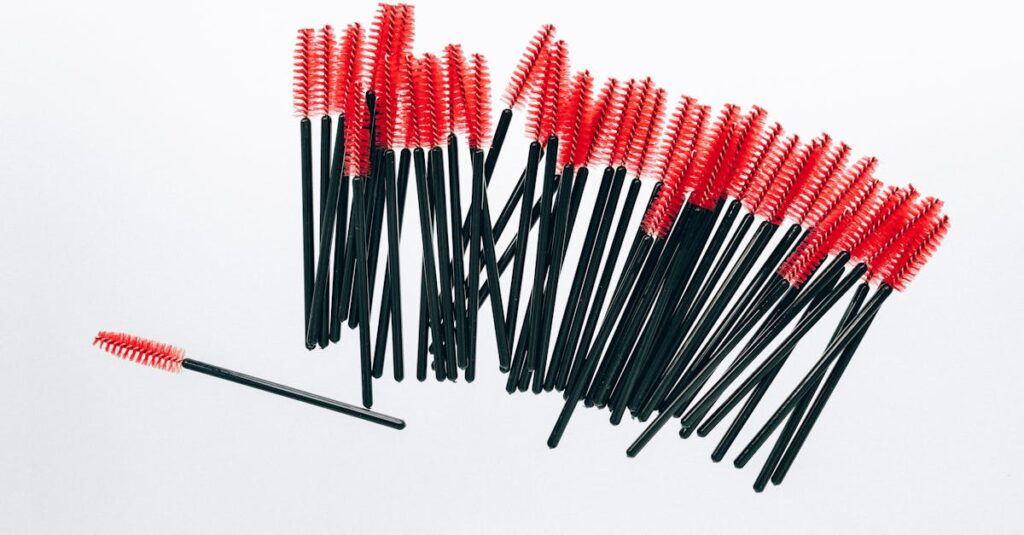Ever noticed your once-sparkling white gold ring starting to take on a yellow hue? You’re not alone. Many people are surprised when their white gold jewelry begins to change color, but there’s a good reason behind it.
White gold isn’t naturally white; it’s an alloy of gold mixed with other metals like nickel or palladium and then coated with rhodium to give it that bright, shiny finish. Over time, everyday wear and tear can cause the rhodium plating to wear off, revealing the natural yellow tint of the gold beneath. Understanding why this happens can help you keep your cherished pieces looking their best.
Understanding White Gold
White gold, an alloy of gold mixed with other metals like palladium or nickel, achieves its signature color through rhodium plating. This coating not only enhances its white appearance but also adds a protective layer. However, beneath this coating, the alloy retains gold’s natural yellowish hue, despite the mixed metals.
The initial popularity of white gold stems from its resemblance to platinum, combined with a relatively lower cost. Jewelers create varying shades of white gold by adjusting the proportions and types of metals in the alloy. For example, more palladium results in a whiter finish, while more nickel can add strength.
Rhodium plating wears off with regular wear. This process, known as “rhodium wear,” causes the yellow tint of the gold to reappear over time. Activities like swimming, cleaning, or simply everyday wear contribute to this gradual change. When re-plated, the ring’s white, shiny appearance gets fully restored.
Professional jewelers offer rhodium plating services to maintain the ring’s appearance. Depending on the ring’s use, re-plating might be needed every 1-2 years. Regular maintenance ensures the ring remains visually appealing and protected.
Causes of White Gold Turning Yellow
White gold rings turn yellow over time due to several factors. This phenomenon primarily links to the ring’s composition, wear and tear, and exposure to chemicals.
Composition of White Gold
White gold is an alloy of gold mixed with metals like palladium or nickel. Despite the rhodium plating that gives it a white appearance, the underlying metal retains a yellowish hue. Over time, as the rhodium wears off, the inherent yellow color shows through. The specific metal proportions affect the initial shade, with higher levels of gold resulting in a more pronounced yellow tone.
Wear and Tear
Regular wear causes the rhodium plating on white gold rings to diminish. Activities like swimming, cleaning, or even daily tasks contribute to this erosion. The plating wears off faster with frequent use, revealing the yellow gold beneath. While re-plating by professional jewelers can restore the ring’s appearance, routine maintenance every 1-2 years is essential to keep the ring looking its best.
Exposure to Chemicals
Chemicals expedite the yellowing of white gold rings. Substances in household cleaners, personal care products, and swimming pools affect the rhodium coating. When these chemicals interact with the ring, they cause the rhodium to wear off quicker, exposing the underlying yellow gold. Protecting the ring from chemical exposure by removing it during such activities can help maintain its white appearance.
By understanding these causes, one can take steps to preserve the brightness of a white gold ring.
Preventive Measures
Taking care of your white gold ring can help maintain its luster and delay the yellowing process.
Regular Maintenance
Scheduling regular maintenance is essential. I recommend having your ring professionally cleaned and inspected every 6-12 months. This practice reduces the risk of buildup from dirt and oils, enhancing the longevity of the rhodium plating. Be mindful to remove your ring during activities prone to scratching or impact.
Proper Storage
Properly storing your ring helps prevent damage. Always store it in a fabric-lined jewelry box or a soft pouch if you’re not wearing it. This minimizes exposure to air and reduces the chances of scratching. Keep it separate from other jewelry pieces that could cause abrasion.
Avoiding Harsh Chemicals
Avoid exposing your ring to harsh chemicals. Chemicals in products like bleach, hand sanitizers, and chlorine can erode the rhodium coating. When using cleaning products, always remove your ring to prevent contact with these substances. This helps maintain the ring’s bright white appearance.
Solutions to Restore the Original Color
White gold rings can regain their original color through professional services and at-home techniques. Here are detailed methods under specific subheadings:
Professional Replating
Professional replating effectively restores a white gold ring’s color. Jewelers use rhodium plating, which adds a new layer of rhodium to the jewelry. This process typically involves cleaning the ring first and then applying the rhodium. The new rhodium layer enhances the ring’s white appearance and protects the underlying gold alloy. It’s advised to have rings replated every 1-2 years based on the frequency of wear.
At-home Cleaning Methods
At-home cleaning methods help maintain a white gold ring’s shine between professional replating sessions. Using a mild soap solution and a soft brush can remove dirt and oils. Rinse thoroughly with lukewarm water to avoid residue. For tougher stains, create a paste using baking soda and water, apply gently, then rinse off. Ensure thorough drying to prevent water spots, using a soft cloth.
Conclusion
White gold rings are beautiful but they require regular maintenance to keep their shine. By understanding the nature of white gold and taking preventive measures like frequent cleaning and avoiding harsh chemicals, you can minimize the yellowing effect. Remember to schedule professional re-plating services every 1-2 years. If your ring does start turning yellow you now have the knowledge to restore its original brilliance. Regular upkeep and professional care ensure your white gold ring remains stunning for years to come.
Frequently Asked Questions
What is white gold?
White gold is an alloy of gold mixed with other white metals and plated with rhodium to give it a bright white finish.
Why does white gold turn yellowish over time?
The yellowish tint, known as “rhodium wear,” occurs as the rhodium plating wears off, revealing the gold underneath.
How often should white gold be re-plated?
White gold jewelry should be professionally re-plated every 1-2 years to maintain its white shine.
How can I prevent my white gold ring from turning yellow?
Regular cleaning, inspections, and avoiding harsh chemicals can help prevent rhodium wear on white gold jewelry.
Are there at-home methods for maintaining white gold’s shine?
Yes, cleaning with mild soap, using a baking soda paste, and proper drying techniques can help maintain the shine between professional re-plating sessions.
Is professional re-plating necessary for white gold rings?
Yes, professional re-plating services are crucial to restore the original color and finish of white gold rings.
What materials are safe for cleaning white gold at home?
Mild soap and a baking soda paste are safe for cleaning white gold at home without damaging the surface.
How can regular inspections help maintain white gold jewelry?
Regular inspections by a professional can identify areas of wear early and ensure timely re-plating, helping maintain the jewelry’s appearance.


